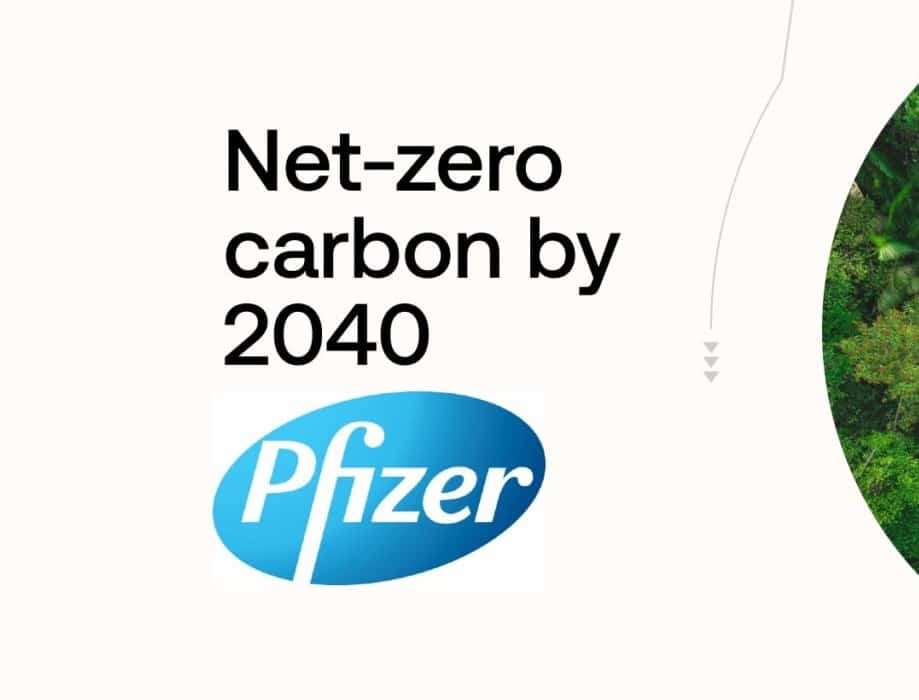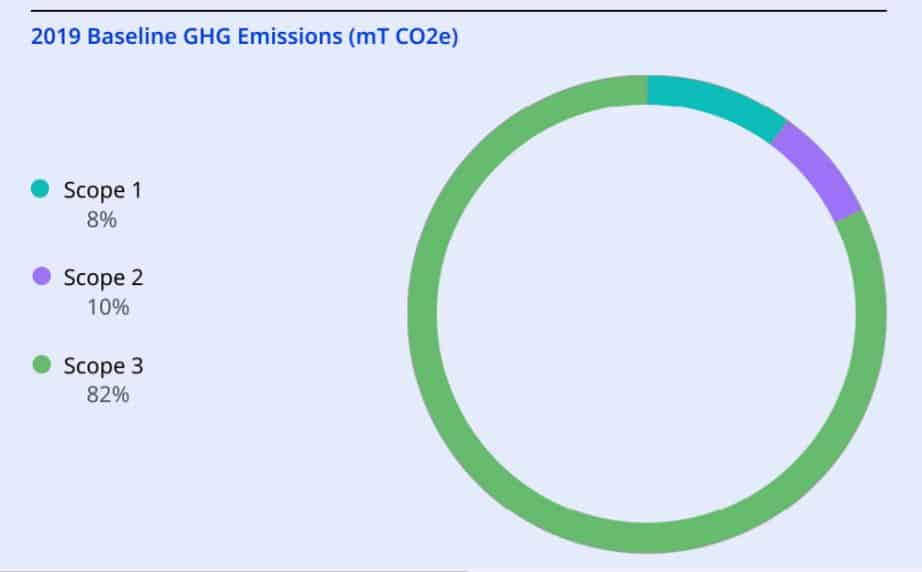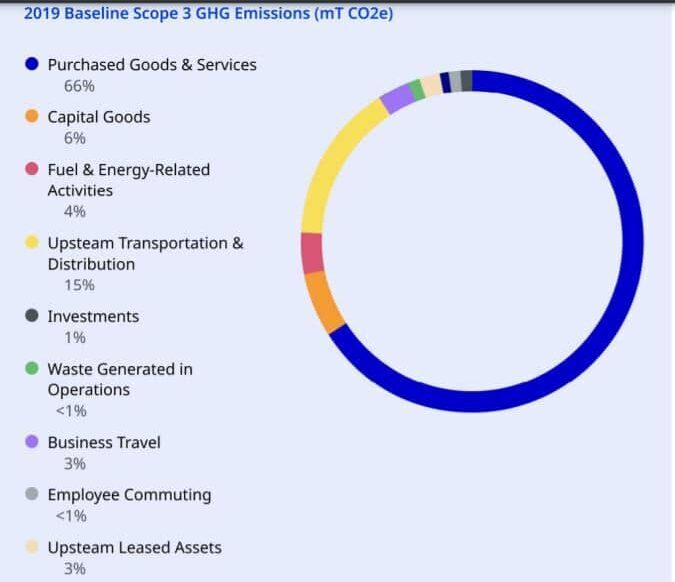Pfizer revealed its Net Zero path and plans to reduce GHG emissions by 95% from 2019 levels by 2040.
Pfizer is one of the world’s biggest biopharmaceutical companies and also aims to cut its value chain emissions by 90% by 2040.
This commitment is part of Pfizer’s Environmental, Social and Governance (ESG) priorities.
Other pharma companies that have made net zero pledges include Biogen, Bayer, AstraZeneca, Sanofi, Novartis, and J&J.
Pfizer also announced that it had signed a voluntary US Department of Health & Human Services pledge to cut emissions and ramp up climate action.
Pfizer Net Zero Commitment
Pfizer’s net zero pledge builds on more than 20 years of environmental sustainability. For the firm’s CEO and Chairman Albert Bourla,
“With urgency of action, we believe that our commitment to speed up decarbonization of our value chain and achieve the Net-Zero standard… (which aligns with Pfizer’s purpose and ESG priorities)… can help drive positive change and build a healthier, more sustainable world.”
The pharma firm has been delivering emissions reduction goals since 2000. In fact, it was the first in the sector to set up STBi-approved emissions reduction targets.
In 2020, Pfizer declared to become carbon neutral across internal operations by 2030. It also seeks to reduce Scope 1 and 2 GHG emissions by 46% by 2030 from its 2019 baseline.
The image shows the company’s 2019 GHG emissions baseline.
- So far, Pfizer’s Scope 1 and 2 emissions for 2021 were 7% lower than its 2019 levels. Most of the reductions are due to COVID-19 responses such as a decrease in field sales operations.
In cutting emissions from its operations, the pharma company plans to achieve that by reducing its reliance on fossil fuels. It also aims to invest in a fleet of hybrid and electric vehicles.
To help reach its net zero pledge Pfizer plans to:
- Design greener facilities or renovation projects with reduced environmental impact
- Replace equipment at end-of-life with energy-efficient alternatives
- Invest in no/low carbon technologies that enable sourcing energy from renewables
- Undertake process enhancements within product manufacturing to reduce the resources needed
Pfizer further intends to purchase 80% renewable electricity by 2025, and 100% by 2030.
In 2021, it was able to use 6.5% renewable power. It also entered into a virtual power purchase agreement (PPA) with Vesper Energy for 310 MWh of renewable energy starting in 2023.
Ramping up climate action across supply chain
Pfizer’s scope 3 (value chain) GHG emissions is over 4x greater than its direct operations. The procurement of goods and services (66%) for producing medicines and vaccines takes the most of its scope 3 emissions.
Other activities contributing to value chain emissions are shown in the graph below.
To reduce scope 3 emissions, Pfizer is urging its suppliers to also set their own STBi aligned reduction targets.
In 2021, Pfizer was recognized as a CDP Supplier Engagement Leader four times in a row for its work to measure and reduce environmental risks in its supply chain.
The company further seeks to tackle residual emissions with verified carbon credits. These are through investing in projects that avoid or reduce GHG emissions.
But the firm didn’t determine yet how much credits it will buy and where.
Other key environmental initiatives
Sustainable Medicines. Pfizer conducts life cycle assessments (LCAs) across its small molecule, large molecule, and device portfolios. It will help guide the company which areas to improve to reduce footprint of medicines.
Waste. Pfizer uses a metric that encourages the hierarchy of control of handling waste: reduce, reuse, recycle, disposal. Each site has targets to improve the circularity of its waste.
Also, its manufacturing sites look for opportunities to reduce, reuse and recycle other materials.
Water Stewardship. Responsibly managing wastewater discharges from internal sites and assessing discharges from supplier sites. Achieved 15% reduction in water withdrawal in 2021 compared to 2020.




